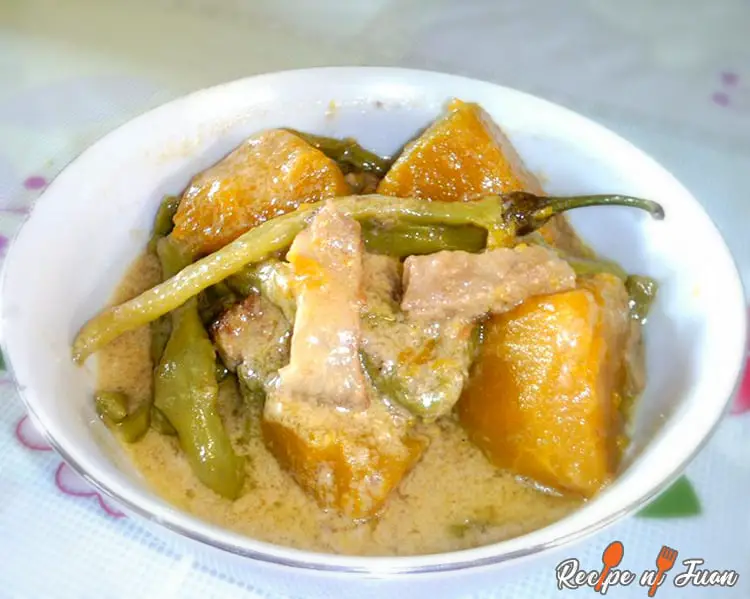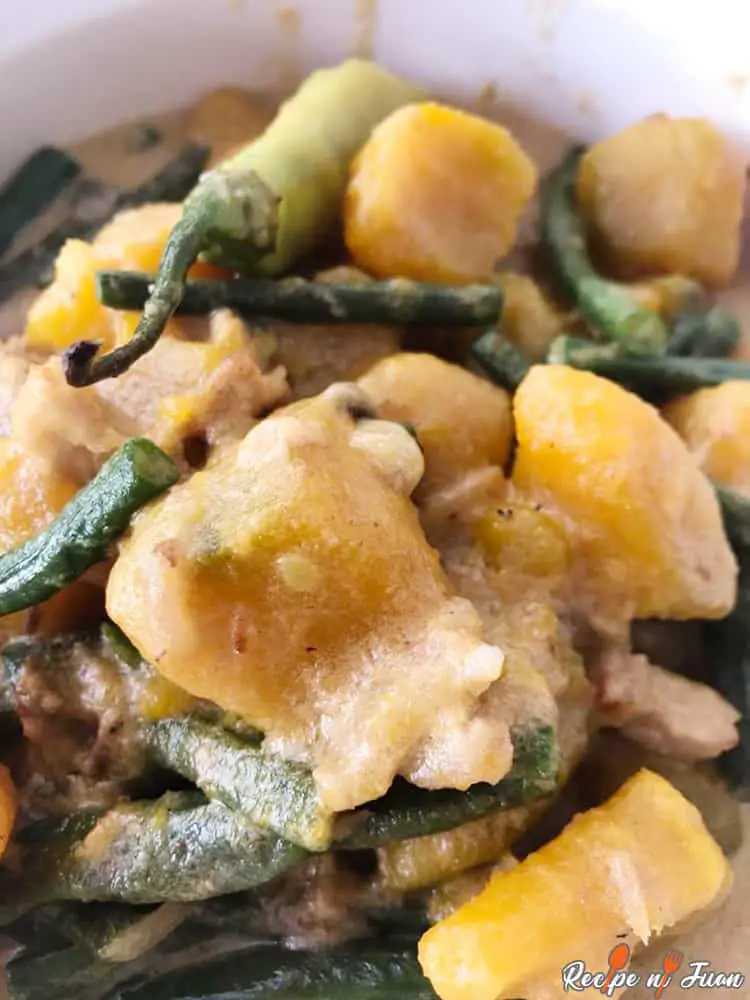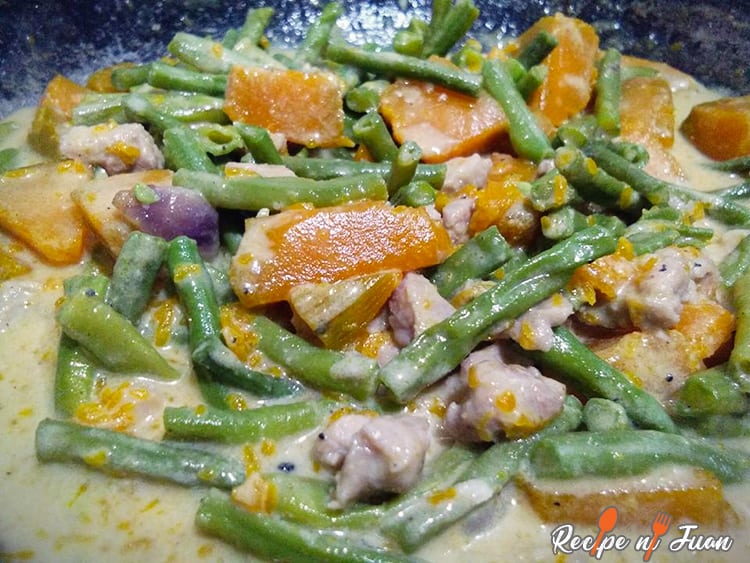Ginataang Sitaw at Kalabasa Recipe
It’s easy to remember the ingredients for Ginataang Sitaw at Kalabasa with Pork. First, you have the meat, which is pork.
Second, you have the squash and string beans as the main vegetables. Lastly, you have the gata or the coconut milk used to simmer all of the ingredients mentioned earlier.


Check out our new cookbook
Bitemybun's family recipes with complete meal planner and recipe guide.
Try it out for free with Kindle Unlimited:
Read for freeIn this post we'll cover:
Ginataang Sitaw at Kalabasa preparation
Ginataan Recipes like Tambakol tuna are popular among the Filipinos because the simmered coconut milk not only adds flavor to any dish, but it also heightens whatever flavor the main ingredients already has.
Traditionally, the preparation time for any ginataan dish is rather long, as you have to get the coconut, and shred the coconut meat yourself using your “pangkayod.”
However, with the ingenuity of the coconut vendors in the town markets; having the coconut milk shredded once the coconut is opened, has made following this pork ginataan with squash and string beans recipe easier.
This then cuts the preparation time and makes it an appealing dish to make. Lastly, the combination of meat and vegetables is perfect for meat-eaters and veggie eaters alike.

Sautee first the ingredients and toss in the pork, after which you add the coconut milk.
Depending on how thick you want the dish to be, you can either splurge or scrimp on the coconut milk.
Let the coconut milk cover all of the ingredients simmer and voila, you have a tasty ginataan dish.

Ginataang sitaw at kalabasa recipe
Ingredients
- 1½ lbs pork cubed
- 1½ cup beef broth
- 2 cups coconut milk
- ¼ cup shrimp paste (bagoong)
- 1 small butternut squash cubed
- 1 small bundle of string beans cut into 1–2 inch pieces
- 1 medium yellow onion sliced
- 1½ tsp minced garlic
- 3 tbsp cooking oil
- ¼ tsp ground black pepper
- Salt to taste
Instructions
- Heat the cooking oil in a cooking pot.
- Once the oil gets hot, saute the garlic and onion.
- Add the ground black pepper. Stir and then add the pork. Cook the pork until the color turns light brown.
- Pour the beef broth in the cooking pot. Let it boil.
- Add the coconut milk. Stir and allow to boil once more. Cover and cook in low to medium heat until the pork gets tender.
- Add the squash. Stir, cover and cook for 8 to 10 minutes.
- Add the shrimp paste. Stir.
- Add the string beans. Cover and cook for 3 to 5 minutes. Add salt only if needed.
- Transfer to a serving plate. Serve.
- Share and enjoy!
Video

Since the coconut milk tends to get really oily once the dish is cooked, this Ginataang Sitaw with Kalabasa is best eaten with heaps and heaps of that perennial staple, steamed rice.
For the side dips, you have a choice of Bagoong Alamang, Bagoong Isda or Patis. However, you can also choose to pour it into the recipe itself to add a seafood taste.
For the more daring ones, tweaking this pork ginataan with squash and string beans recipe and adding red chillis or siling labuyo in the dish will also help balance out the oiliness of the dish as well.
Salamat po.
If you like kalabasa, you should check this Bulanglang or Filipino “Dinengdeng” recipe, soup with leftover fish as well
Check out our new cookbook
Bitemybun's family recipes with complete meal planner and recipe guide.
Try it out for free with Kindle Unlimited:
Read for freeJoost Nusselder, the founder of Bite My Bun is a content marketer, dad and loves trying out new food with Japanese food at the heart of his passion, and together with his team he's been creating in-depth blog articles since 2016 to help loyal readers with recipes and cooking tips.
